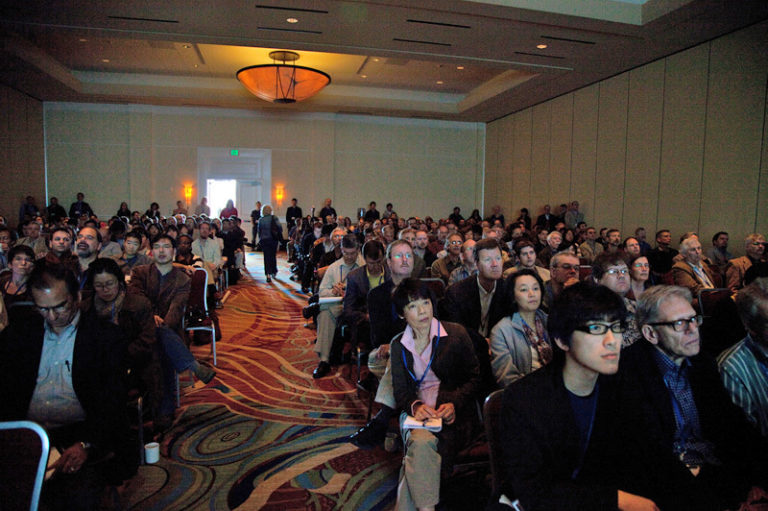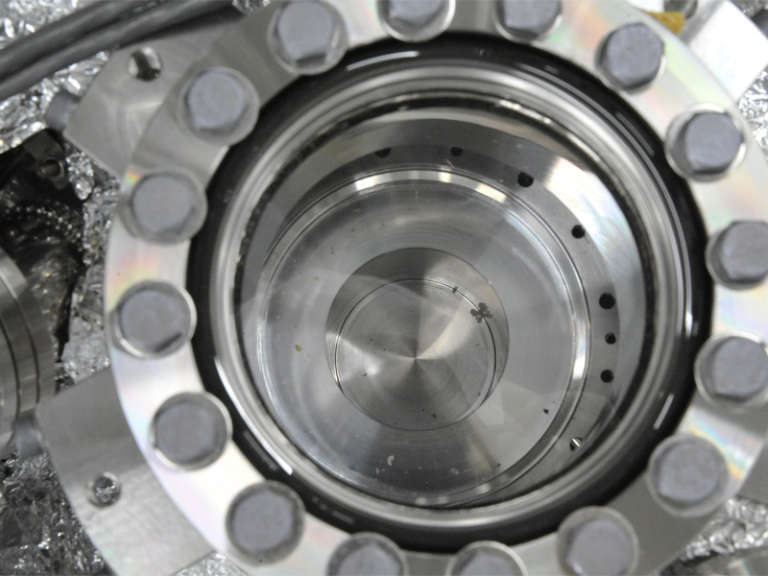Emily Lakdawalla • Mar 16, 2011
LPSC 2011: Analysis of the grains returned by Hayabusa
I'd been despairing of finding a good source for a writeup of the presentations in the Hayabusa session at last week's Lunar and Planetary Science Conference, but am happy to report that I've finally found an excellent one. Last week's session was significant because it was the first presentation at an international scientific meeting since the opening of the sample return capsule, and would tell us all about these first-ever samples retrieved from the surface of a world beyond the Earth and Moon. First I'll repost a detailed writeup by Ian Lyon, which was originally posted on his own Earth & Solar System blog; after that I've posted a roundup of some factual information on the mineralogy and petrology of the particles gleaned from conference attendees' Tweets.
by Ian Lyon
Hayabusa was a Japanese mission to return material from an asteroid, Itokawa. Its long story was a series of major problems, mainly overcome, but until the sample collector was opened, it wasn't known whether Hayabusa returned any sample at all. Its sample collection mechanism had failed to fire and all the team could hope for was that some grains dislodged from the touch and go by Hayabusa on the asteroid surface had drifted up into the sample collection chambers.
Here at LPSC, a whole morning session was devoted to the Japanese science team who were to report on their preliminary findings. It's a logistical detail that abstracts for talks have to be submitted in January and the Japanese preliminary science team only started work on the samples then. So the abstracts all said "we will report results...." somewhat hopefully perhaps but in the event, almost all teams managed to report results and had conducted remarkably extensive studies considering the very short timescale.

Somewhat unusually for scientific talks, the Japanese team also managed to deliver their work with wit and humour and raised a number of laughs. When the sample chambers were opened they looked clean and empty. There was nothing visible larger than one millimeter in size, but fortunately on closer inspection, some smaller grains were observed. The team tried to pick out the grains with a quartz glass probe but this wasn't too successful at picking up the small particles. They then tried scraping a Teflon spatula across some of the chamber surface and fortunately on subsequent inspection in an SEM, found a number of grains stuck to the edge of the spatula. These grains had to be picked from the Teflon spatula and distinguished and separated from a large number of similarly sized aluminium-rich particles that were also present, a result of the scraping of the aluminium sample chamber surface.
Finally, somewhat in desperation one suspects, they turned the chamber upside down and held it over a quartz disk and hit the back of the chamber 20 times with the handle of a large screwdriver! This raised quite a laugh, possibly in disbelief at the procedure!

So, about 1,500 particles have been separated so far for analysis and the second chamber still remains with presumably a similar number of particles inside. The particles were all tiny though. The largest is only 180 microns, and most of the 1,500 were 10 microns or less. Another funny slide showed a huge circular table with lots of seats around with a tiny slice of cake in the middle.
A set of four large grains were studied, the largest one 100 by 30 microns, which was given the name Aiko. Three other slightly smaller ones were called Takaoki, Michael, and Toshi, after four people who had done a great deal of work on the grains. Aiko was covered by fine particulate grains "like cosmetics on a woman" -- to more laughter.
Very careful oxygen isotope abundance measurements and the overall petrology and elemental abundances of minerals show pretty conclusively that Itokawa is an LL5 chondritic body. The "chondritic" part means that the elemental ratios are broadly similar to the starting material that went to make up the solar system at its formation. It hasn't been heavily processed, unlike material in the Earth or Mars. The "LL" part means that it is low in iron, and low in metals generally. "5" means that it has been quite strongly thermally metamorphosed. That means that most of the minerals have been equilibriated, heated to such a high temperature that they have become homogenised between their neighbouring grains. There are some variations, with some grains identified as "H" (high in iron) and some as "LL4" (a little less altered) but it's clear that most of the body has been extensively heated and metamorphosed.
Perhaps not surprisingly, no organic materials have yet been detected.
The grains that were analysed for noble gas contents showed that they were full of light noble gases that matched the solar wind, so these grains have been at the surface of Itokawa for a long time and become saturated with solar wind atoms.
Possibly the most significant thing that the Itokawa grains can tell us is about a process called "space weathering." There are tens of thousands of meteorites in collections around the world, and we would like to know where they come from. One way to try and find out the parent asteroids is to compare their optical spectra with different meteorites. But when meteorites come to Earth they are ablated in a fireball as they descend through the atmosphere, so we can't see the original surfaces that were exposed to space. Grains on the surfaces of asteroids still in space are altered by solar wind bombardment and micrometeorite impacts. This affects their spectra, and makes it problematic to compare them to meteorites found on Earth. The Itokawa grains have been exposed on the surface of the asteroid, as shown by the solar wind noble gas contents of the grains, so they can studied to see how they have been altered by these processes. Many of the grains showed thin (tens of nanometers) rims of altered materials probably caused by the space weathering process, and the preliminary conclusion is that the dominant space weathering process is solar wind sputtering.
And now for those mineralogical and petrological facts about the particles.
@asrivkin: Lessons learned from handling the Stardust samples helped with Hayabusa sample analysis.
@The_Stargazer: Of the 1,500 particles returned, 52 were distributed for preliminary analysis. Total Hayabusa sample amounts to less than 1 milligram. Classification of large Hayabusa particles included olivine, followed by pyroxene, plagioclase, troilite. Also taenite and chromite.
@asrivkin: Of the 52, 5 were analyzed for space weathering, 3 for noble gases, 40 for mainstream analysis. Mineralogy consistent with an LL chondrite! Just like Binzel et al (2001) said. :) 31 of 38 particles are highly equilibrated, the rest poorly equilibrated. First group like LL5-6, second like LL4. Of the 40 particles in mainstream analysis, 55% were polymineralic, 45% monomineralic, mostly olivine. Most particles have sharp edges, but about 25% have rounded edges. Those particles seem to be more space weathered. Mean microporosity ~1.4%,compared to 5+/-2% seen in lab for LL chondrites. A Grain density of about 3.4 g/cm3 implies 40% macroporosity on Itokawa. In terms of their ellipsoidal shape, they have axial ratios of about 1 : 0.7 : 0.4 for sample particles. Disk-like particles are abundant. Not terribly unlike lab experiments? Different space weathering styles in different minerals? Micrometeorites ineffective on Itokawa? Solar wind sputtering major agent?
@MonicaGrady: Large Hayabusa particles are rocks. Olivine, Fa 24 to 31 [this describes the proportion of magnesium to iron in the olivine mineral]. Classification LL4. But it's not as simple as that. There are two populations of olivine, all in one 100 micron rock. Same with pyroxene. It is an LL 4 breccia with LL5-6 clasts. Mean porosity lower than LL chondrites because the particles aren't cracked.
@barbylon: My spacecraft went all the way to Itokawa and all I got was an equilibrated LL chondrite.
Support our core enterprises
Your support powers our mission to explore worlds, find life, and defend Earth. You make all the difference when you make a gift. Give today!
Donate

 Explore Worlds
Explore Worlds Find Life
Find Life Defend Earth
Defend Earth


